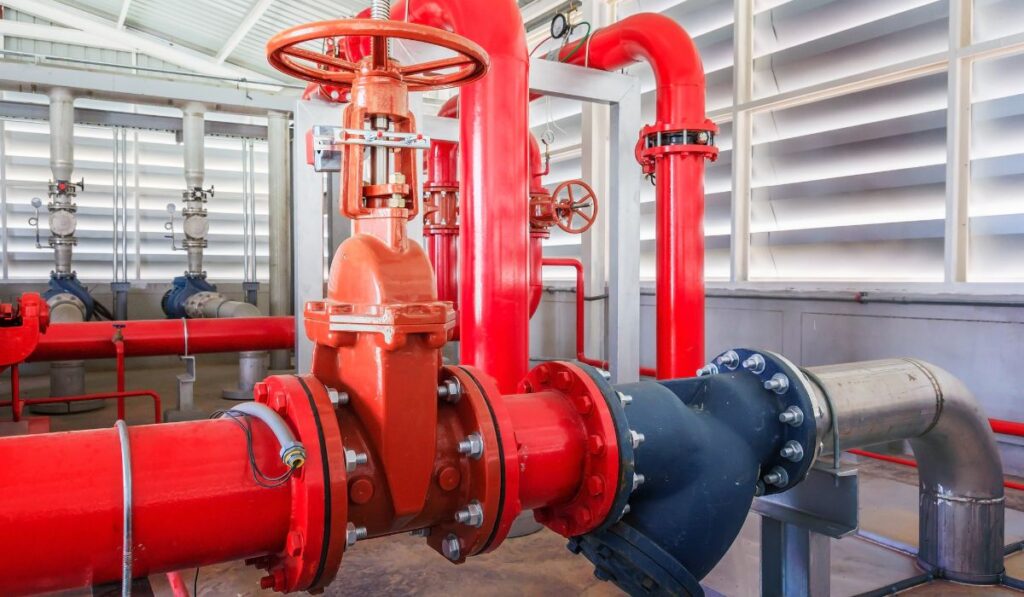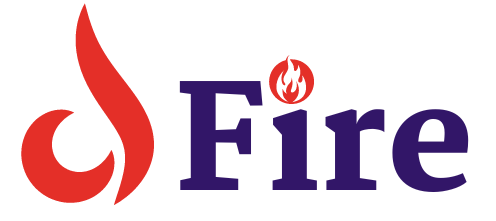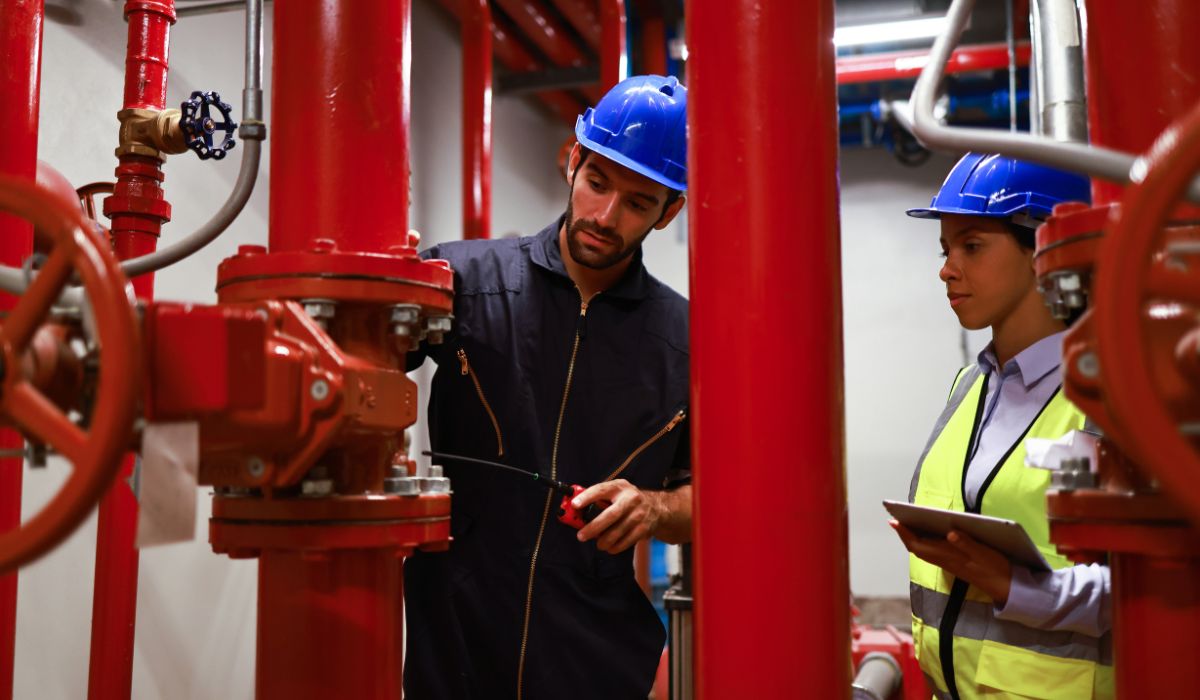Fire Protection Pressure Reducing Valves regulate water pressure in fire protection systems. They ensure consistent and safe water flow.
Fire protection systems rely on these valves to maintain optimal pressure. Excessive pressure can damage pipes and equipment. These valves adjust and control the pressure to prevent such issues. They are essential in high-rise buildings and areas with varying water pressure.
Proper installation and maintenance are crucial for their effectiveness. Regular inspections ensure they function correctly. Correctly set valves enhance fire safety by delivering the right water pressure. Fire Protection Pressure Reducing Valves are a key component in reliable and efficient fire suppression systems. Their role in fire safety cannot be overstated.
What Are Fire Protection Pressure Reducing Valves?
Fire protection pressure reducing valves are specialized devices designed to control and regulate water pressure within a fire sprinkler or standpipe system. They reduce incoming water pressure from a source, such as a municipal water supply or fire pump, to a lower, safer pressure level suitable for firefighting equipment and sprinkler heads. By preventing over-pressurization, these valves protect fire protection systems from potential damage and ensure optimal performance during an emergency.
Importance of Pressure Control in Fire Protection Systems

Fire protection systems are crucial for safety. They help prevent fire damage. These systems save lives and protect property. One key component is the Fire Protection Pressure Reducing Valve (PRV). PRVs control water pressure. This ensures effective fire suppression. Let’s explore the importance of these systems.
Safeguarding Lives
Fire protection systems can save lives. They provide early fire detection. This allows people to evacuate quickly. Fire Protection PRVs ensure water flows at the right pressure. This helps firefighters extinguish fires faster. Lives depend on these systems working correctly.
Protecting Property
Fires can cause massive property damage. Fire protection systems help minimize this damage. They activate sprinklers and alarms. This alerts people and reduces fire spread. Pressure Reducing Valves play a key role here. They maintain optimal water pressure. This ensures effective fire suppression.
| Component | Function |
|---|---|
| Fire Protection PRV | Controls water pressure for fire suppression |
| Sprinklers | Extinguish fires quickly |
| Alarms | Alert people to evacuate |
These systems are essential for safety. They protect both lives and property. Fire Protection PRVs ensure everything works as it should. This is why fire protection systems are so important.
Role Of Pressure Reducing Valves
Fire protection pressure reducing valves are vital for fire safety. These valves control water pressure in fire protection systems. They ensure water flows at the right pressure to fight fires effectively. Without these valves, the system could fail or get damaged.
Maintaining Optimal Pressure
Pressure reducing valves maintain optimal water pressure in fire protection systems. This is crucial for effective fire suppression. High pressure can damage hoses and nozzles. Low pressure can make the system ineffective. The valve adjusts the pressure to a safe level.
Here are some benefits of maintaining optimal pressure:
- Enhanced Safety: Prevents accidents due to high-pressure surges.
- Effective Fire Fighting: Ensures water reaches the fire at the right pressure.
- System Longevity: Reduces wear and tear on system components.
Preventing System Damage
High pressure can damage fire protection systems. Pressure reducing valves prevent this damage. They control pressure spikes that can harm pipes, pumps, and other components. This ensures the system remains functional during emergencies.
Consider these points on how pressure reducing valves prevent system damage:
- Protects Components: Keeps pipes, pumps, and nozzles safe from high pressure.
- Prevents Leaks: Reduces the risk of leaks and bursts.
- Ensures Reliability: Maintains system integrity during critical times.
Using pressure reducing valves is an essential step in fire protection. They provide safety and reliability by maintaining optimal pressure and preventing damage.
Types of Fire Protection Pressure Reducing Valves
Pressure reducing valves are crucial for fire protection systems. They ensure optimal pressure levels. There are two main types: Direct Acting Valves and Pilot Operated Valves.
Direct Acting Valves
Direct acting valves are simple and reliable. They respond directly to pressure changes. These valves have a quick response time. They are often used in smaller systems.
- Simplicity: Fewer moving parts mean less maintenance.
- Reliability: Consistent performance in various conditions.
- Quick Response: Immediate adjustment to pressure changes.
| Feature | Benefit |
|---|---|
| Simple Design | Easy to install and maintain |
| Immediate Action | Adjusts pressure quickly |
Pilot Operated Valves
Pilot operated valves are more complex. They use a pilot valve to control the main valve. These are suitable for larger systems and higher pressures.
- Precision: They offer accurate control over pressure levels.
- Efficiency: They work well under high-pressure conditions.
- Flexibility: They can handle a wide range of pressures.
| Feature | Benefit |
|---|---|
| High Precision | Ensures accurate pressure control |
| Handles High Pressure | Suitable for large systems |
Choosing the right valve depends on your system needs. Consider factors like system size and pressure requirements.
Installation Best Practices
Installing Fire Protection Pressure Reducing Valves correctly is crucial. Proper installation ensures optimal performance and safety. Follow these best practices to ensure a successful setup.
Proper Sizing
Proper sizing is essential for effective valve function. Incorrect sizing can lead to system failure.
| Pipe Size (inches) | Valve Size (inches) | Flow Rate (GPM) |
|---|---|---|
| 1 | 1 | 15 |
| 2 | 2 | 50 |
| 3 | 3 | 100 |
Match valve size to pipe size for best results. Use the table above for guidance.
Correct Placement
Correct placement is vital for valve efficiency. Follow these placement tips:
- Install valves near the main supply line.
- Ensure valves are accessible for maintenance.
- Avoid placing valves in high-traffic areas.
Accessibility is important. Ensure easy access for regular checks.
Maintenance And Testing
Regular maintenance and testing of Fire Protection Pressure Reducing Valves (PRVs) are crucial. This ensures safety and efficiency. Proper care can prevent system failures. Below are essential practices for maintaining and testing PRVs.
Routine Inspections
Routine inspections should be performed regularly to ensure PRVs function correctly. These inspections help identify potential issues early. Key points to check during inspections include:
- Visual Inspection: Check for any visible damage or leaks.
- Pressure Gauge: Ensure the pressure gauge is within the correct range.
- Valve Condition: Examine the valve for corrosion or wear.
Routine inspections should be documented for future reference. This helps track the condition of PRVs over time.
Performance Testing
Performance testing is essential for verifying that PRVs operate as intended. This involves simulating real-world conditions to check the valve’s response. Key steps in performance testing include:
- Set-Up: Prepare the testing environment with necessary equipment.
- Pressure Adjustment: Adjust the system to the required test pressure.
- Observe Response: Monitor the valve’s response to pressure changes.
Performance testing should be conducted by trained professionals. This ensures accurate results and safety.
| Inspection Type | Frequency |
|---|---|
| Visual Inspection | Monthly |
| Pressure Gauge Check | Quarterly |
| Performance Testing | Annually |
Regular maintenance and testing are vital for the reliability of Fire Protection PRVs. By following these practices, safety and efficiency are assured.
Common Issues And Solutions
Fire Protection Pressure Reducing Valves are essential for maintaining safe water pressure in fire protection systems. These valves help ensure that water pressure remains consistent and safe. However, they can face several common issues that might affect their performance. Understanding these issues and knowing their solutions is crucial for maintaining a reliable fire protection system.
Pressure Fluctuations
Pressure fluctuations can disrupt the effectiveness of fire protection systems. Causes can include air in the pipes, incorrect valve settings, or water supply variations.
Solutions:
- Regularly bleed air from the system to prevent air pockets.
- Ensure valves are set according to manufacturer guidelines.
- Use pressure gauges to monitor and adjust water supply pressure.
Valve Malfunctions
Valve malfunctions can lead to system failures. Common causes are debris, corrosion, or wear and tear.
Solutions:
- Schedule regular maintenance to clean and inspect valves.
- Replace worn or corroded parts promptly.
- Use filters to prevent debris from entering the valve.
By addressing these common issues, you can ensure your Fire Protection Pressure Reducing Valves operate smoothly and effectively, protecting your property from fire hazards.
Key Benefits of Fire Protection Pressure Reducing Valves
Fire protection pressure-reducing valves (PRVs) offer many benefits. They are crucial for fire safety systems and help control water pressure. This section explores their advantages.
Enhanced Safety
Using PRVs greatly enhances safety. They prevent pipes from bursting. High pressure can damage fire protection systems. PRVs reduce this risk.
Controlled pressure ensures water reaches all areas. This is vital during a fire. It ensures effective firefighting. PRVs also prevent excessive force on sprinklers.
Sprinklers work better with proper pressure. This protects property and lives. Ensuring safety in fire emergencies is their top benefit.
Increased Efficiency
PRVs also increase efficiency. They help manage water flow. Consistent pressure means reliable performance. Fire systems respond quickly and effectively.
Efficient water use is another benefit. PRVs ensure the right amount of water is used. This saves resources and reduces waste. It also keeps costs down.
Here’s a quick look at the benefits:
- Consistent water pressure
- Prevents system damage
- Reliable fire protection
- Cost-effective operation
PRVs make fire systems more efficient. They ensure water is used wisely. This enhances overall system performance.
Future Innovations
The world of fire protection pressure reducing valves is evolving rapidly. New technologies are making these valves smarter and more efficient. Let’s explore some exciting future innovations in this field.
Smart Valves
Smart valves are the future of fire protection. These valves can connect to the internet. They allow remote monitoring and control. This makes it easier to ensure safety at all times.
Here are some features of smart valves:
- Real-time data monitoring
- Automatic pressure adjustments
- Remote diagnostics and maintenance
Smart valves can alert you before a problem occurs. This can save lives and property. They are a vital addition to any modern fire protection system.
Sustainable Solutions
Sustainability is important in fire protection. New valves are being designed with the environment in mind. These valves use materials that are eco-friendly. They also reduce water waste.
Consider these benefits of sustainable valves:
- Lower water usage
- Recyclable materials
- Energy-efficient operation
Using sustainable valves can help reduce your carbon footprint. It can also save on utility costs. This makes them a smart choice for both safety and the planet.
Frequently Asked Questions
What Are Fire Protection Pressure Reducing Valves?
Fire protection pressure reducing valves control water pressure in fire protection systems. They ensure consistent, safe pressure levels.
How Do Pressure Reducing Valves Work?
Pressure reducing valves reduce incoming pressure to a manageable level. They adjust based on the system’s requirements.
Why Are Pressure Reducing Valves Important?
Pressure reducing valves prevent excessive pressure. They protect the system and ensure optimal performance during fire emergencies.
Where Are Pressure Reducing Valves Installed?
Pressure reducing valves are installed in fire sprinkler and standpipe systems. They are typically placed at strategic points.
Conclusion
Fire protection pressure reducing valves are vital for safety. They ensure optimal water pressure during emergencies. Regular maintenance and proper installation are essential. Investing in these valves protects lives and property. Stay safe by choosing reliable, high-quality valves. Prioritize fire protection and peace of mind with these critical components.

I’m Abdus Sobur, a highly skilled and professional Fire Safety Officer with a passion for safeguarding lives and property. Over the course of my career, I’ve conducted numerous successful fire safety audits, earning a reputation for excellence in ensuring public safety.
In addition to my role as a Fire Safety Officer, I’m also dedicated to raising awareness about the importance of fire safety. Through my blog, I share insights into the functions of different fire safety equipment, aiming to empower individuals with the knowledge they need to protect themselves and their communities.
I’m driven by a deep commitment to promoting fire safety awareness and preventing fire-related incidents.

